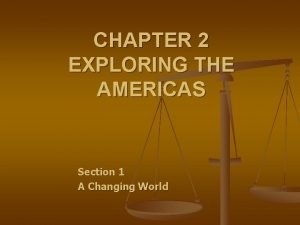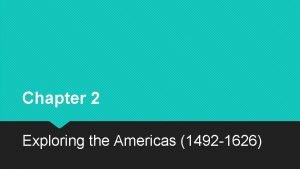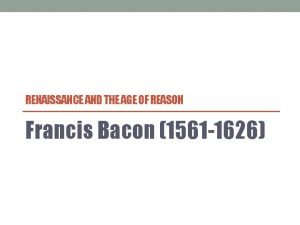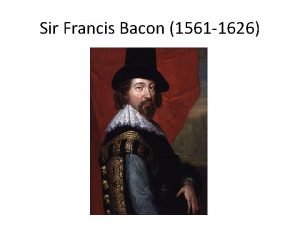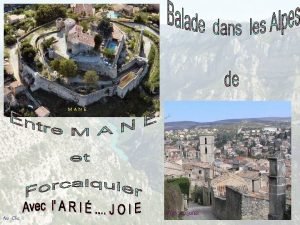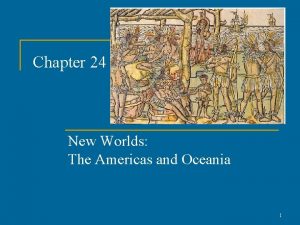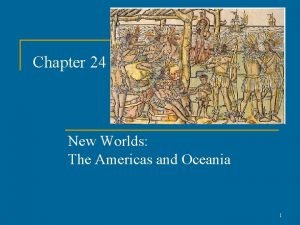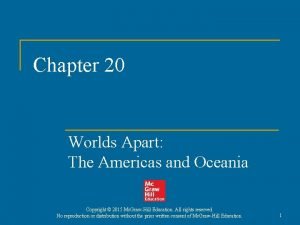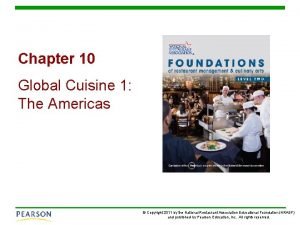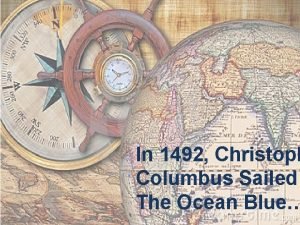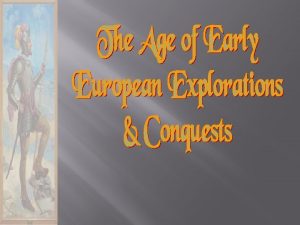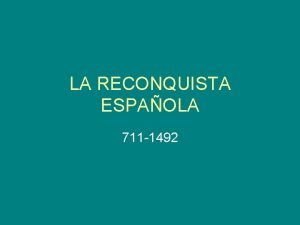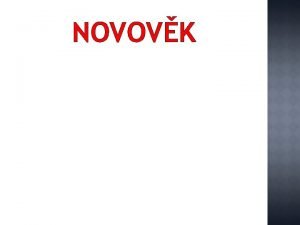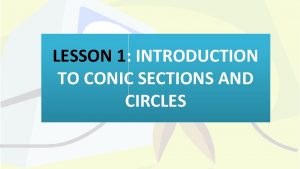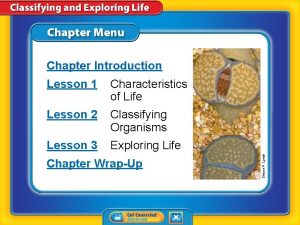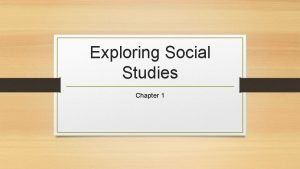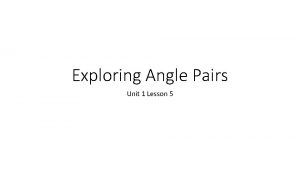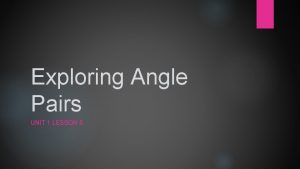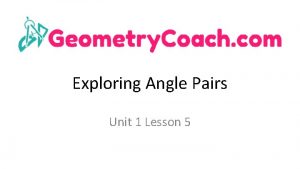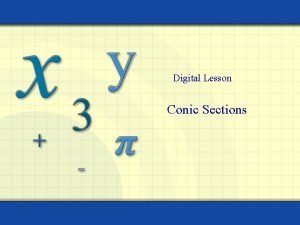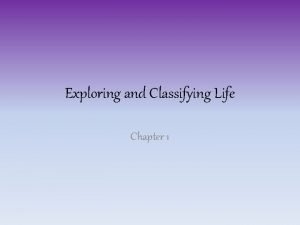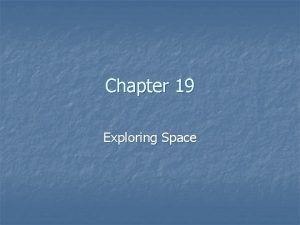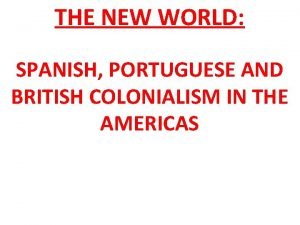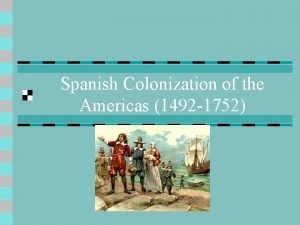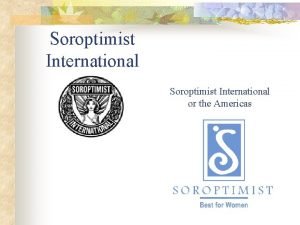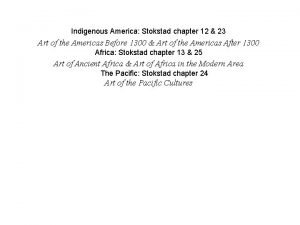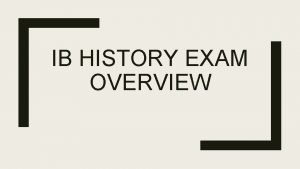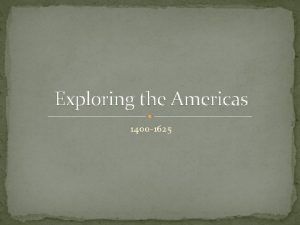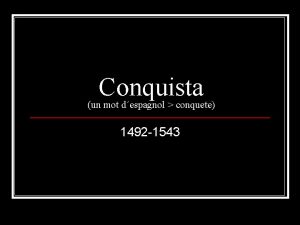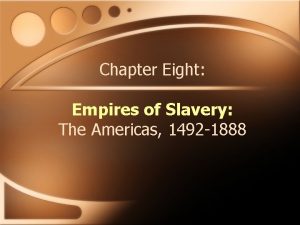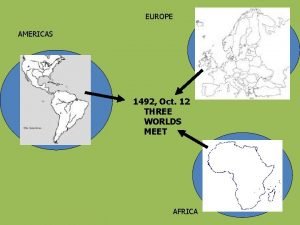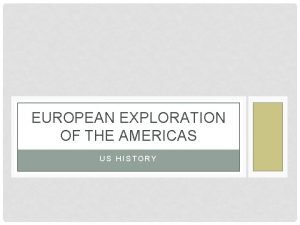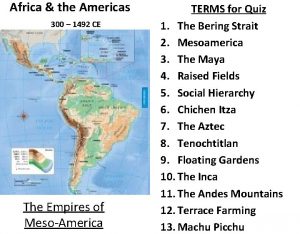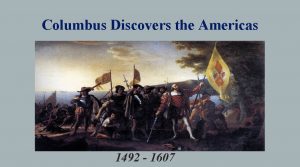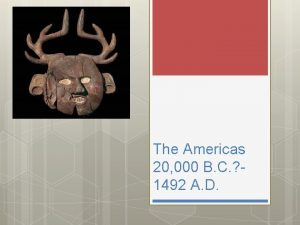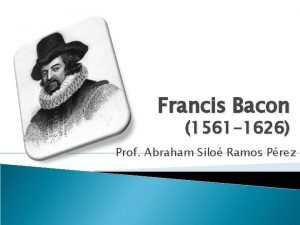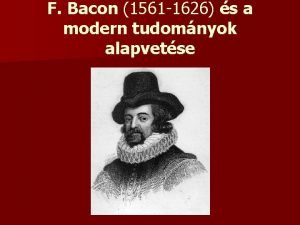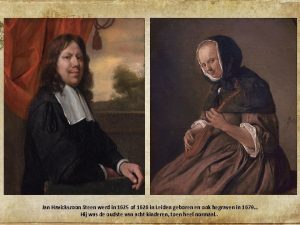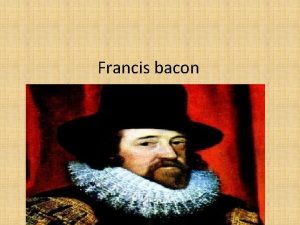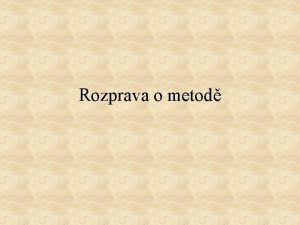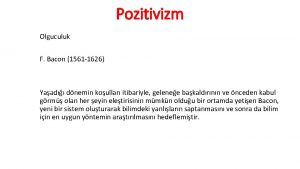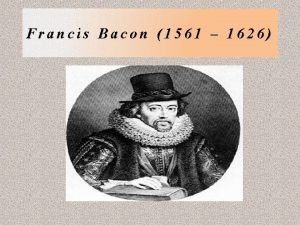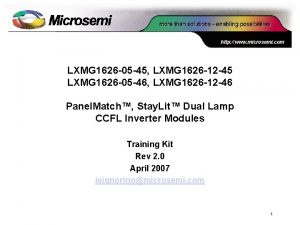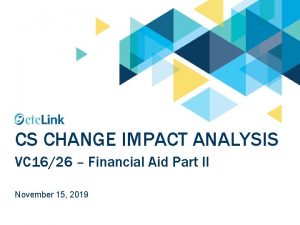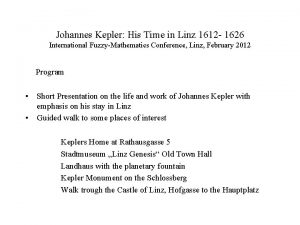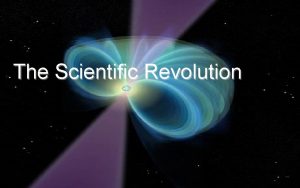Chapter 2 Exploring the Americas 1492 1626 Lesson































- Slides: 31

Chapter 2 Exploring the Americas (1492 -1626)

Lesson 1 – The Growth of Trade Bell Ringer Look at the map of European Exploration on pages 40 -41. Answer the following questions about what you see: 1. How many European nations made explorations of North and South America? 2. Why do you think so many nations sent out ships at this time?

Lesson 1 Road Map Essential Question: Why do people trade? Guiding Questions: What advances in technology paved the way for European exploration? Why was the Age of Exploration a major turning point in history?

Searching for New Trade Routes During the 1400 s: Europeans traded for spices in the Indies Looked for new routes to get there Columbus wanted to sail West across the Atlantic Ocean

Searching for New Trade Routes (cont. ) Technology – the use of scientific knowledge to solve practical problems Better Ships: Faster and more seaworthy Larger (more supplies) Better Sailors: Compass – navigation aid that shows which way you are traveling More accurate maps

Exploring the World Queen Isabella of Spain funds Columbus’ expedition for two reasons: She Wants him to spread Christianity She thinks Spain will get rich from increased trade Columbus sets sail on August 3 rd, 1492 Three ships (Nina, Pinta, Santa Maria) Sailors grew nervous about the distance they traveled Columbus motivated them with tales of riches

Exploring the World (continued) Columbus believes he reaches the Indies on October 12 th, 1492 He actually reaches the Caribbean Islands He calls the local people “Indians” Early maps DID NOT include the Bahamas or the Americas Columbus makes three more voyages to the Americas He claims the new lands for Spain and sets up colonies

Exploring the World (continued) Explorers After Columbus: 1502 – Amerigo Vespucci realizes South America is a continent Geographers call is “America” in his honor 1513 - Vasco Nunez de Balboa discovers the Pacific Ocean, claims it for Spain 1520 – Ferdinand Magellan reaches the Pacific by sailing through a strait Magellan dies during the voyage His crew continues sailing back to Spain First known people to circumnavigate the world

Exploring the World (continued) The Columbian Exchange Animals, plants, people, and germs moved from continent to continent Positive and negative effects came from this Positive: Native Americans used the horse to their benefit Negative: European diseases hurt the Native American populations

Primary Source – Columbus’ Journal A. P. H. I. T. S Wednesday, 10 October. Steered west-southwest and sailed at times ten miles an hour, at others twelve, and at others, seven; day and night made fifty-nine leagues' progress; reckoned to the crew but forty-four. Here the men lost all patience, and complained of the length of the voyage, but the Admiral encouraged them in the best manner he could, representing the profits they were about to acquire, and adding that it was to no purpose to complain, having come so far, they had nothing to do but continue on to the Indies, till with the help of our Lord, they should arrive there. Thursday, 11 October. Steered west-southwest; and encountered a heavier sea than they had met with before in the whole voyage. Saw pardelas and a green rush near the vessel. The crew of the Pinta saw a cane and a log; they also picked up a stick which appeared to have been carved with an iron tool, a piece of cane, a plant which grows on land, and a board. The crew of the Nina saw other signs of land, and a stalk loaded with rose berries. These signs encouraged them, and they all grew cheerful. Sailed this day till sunset, twenty-seven leagues.

Lesson 2 – Spain in America Bell Ringer Write 4 -5 sentences explaining what the vocabulary words TECHNOLOGY and COMPASS have in common, and how the COMPASS helped European explorers in the 1400’s.

Lesson 2 Road Map Essential Question: What are the consequences when cultures interact? Guiding Questions: What were the goals of early Spanish explorers? What led Spanish Explorers to Florida? Why did Spain explore and colonize the American Southwest?

Early Spanish Explorers Conquistadors – Spanish explorers Searched the Americas for gold and silver Wanted to conquer wealthy empires Land, labor, money

Early Spanish Explorers (cont. ) Conquistadors take control of the Aztec and Inca Empires Spanish technology was far more advanced Natives had no immunity to European disease

What Led Spanish to Florida? 1513 – Ponce de Leon claims Florida for Spain He was searching for the “Fountain of Youth” He becomes governor Returns with 200 settlers Natives drive them away Spain continues sending explorers

What Led Spanish to Florida? (cont. ) 1562 – Jean Ribault claims Florida for France Wanted to capture Spanish cargo Ribault sends ships to attack the Spanish A hurricane destroyed every single one Spanish drive France out of Florida Spanish main settlement is St. Augustine

The American Southwest 1528 – Cabeza de Vaca travels to settle in Florida Natives attack their settlement He flees across the Gulf of Mexico Lives for years among the Natives in Texas 1536 – reaches Mexico with stories of “cities of gold”

The American Southwest (cont. ) Conquistadors explore the Southwest for gold They establish: Pueblos – towns Missions – religious communities Presidio – military fort Plantations – large farms Enslave natives for labor 1542 – “New Laws” pass, bans enslaving natives

Claim – Evidence - Reasoning Read the quote on page 53 and answer the following question: Did the Spanish treat the Native Americans fairly? Claim – What do you know? Evidence – How do you know that? Reasoning – Why does your evidence support your answer?

Bell Ringer Review your notes from Chapter 2 Lesson 1 Decide who will have the following group roles: Scribe Artist Informant Time Manager

Key Concept Poster “Age of Exploration” 6 th Grade Using the poster paper, explain the following concepts: 1. What were the Europeans most interested in trading for? Where were they trading for it? 2. What is technology? How did technology help the Europeans travel? 3. Who was Christopher Columbus? What did he do? 4. What was the Columbian Exchange? What were some effects of the Columbian Exchange? USE IMAGERY TO HELP EXPLAIN CONCEPTS

Key Concept Poster “Age of Exploration” 8 th Grade Using the poster paper, explain the following concepts: 1. What were the Europeans most interested in trading for? Where were they trading for it? 2. What is technology? How did technology help the Europeans travel? 3. Who was Christopher Columbus? What did he do? 4. What was the Columbian Exchange? What were some effects of the Columbian Exchange? 5. Create a timeline of early European explorers after Columbus. USE IMAGERY TO HELP EXPLAIN CONCEPTS

Lesson 3 – Competing for Colonies Bell Ringer Explain why the “Cities of Gold” were important and what they influenced the Spanish to do.

Lesson 3 - Road Map Essential Questions: What are the consequences when cultures interact? Guiding Questions: What were the religious motives behind the Age of Exploration? How did French and Dutch settlements compare to the Spanish colonies?

Religious Rivalries based on religious beliefs emerged during the 1500 s Martin Luther’s Reformation He was a German priest who questioned the leadership of the Catholic Church Many people followed his beliefs, creating Protestantism

Religious Rivalries (cont. ) 1533 – King Henry VIII of England leaves the Catholic Church England becomes a Protestant nation 1585 – King Philip of Spain plans to invade England Wants to overthrow Protestantism Sends an armada to go to war England defeats Spain, now able to colonize North America

Religious Rivalries (cont. ) Religious conflict grows among settlements in the Americas Spanish and French = Catholics English and Dutch = Protestants Search for a Northwest Passage Europeans wanted to find a direct water route to Asia through the Americas Many trips were made, none were successful

Analyzing a Primary Source - CER “You will perhaps laugh that at the age of fifty years I am beginning to learn a new language, but one must undertake all things for the service of God and the salvation of one’s neighbor. ” - Marie Guyard, 1639 What can you tell about the type of person Marie Guyard is by reading this quote? Claim Evidence Reasoning

French and Dutch Settlements The French begin settling North America many years after Spain They set up trade with the Native Americans for natural resources (fur, fish, etc. ) Exploring the Mississippi River 1682 – France claims the region where the Mississippi meets the Gulf of Mexico, names it Louisiana 1718 – New Orleans is founded

French and Dutch Settlements (cont. ) French settlements were filled with tenant farmers They paid rent and worked the lands for a set period of time French explorers were friendly with the Native Americans They lived among them, did not want to change their customs Dutch settlers were eager to colonize North America The Netherlands had very little natural resources Dutch colony of New Netherland becomes their main settlement

Northwest Passage Graphic Organizer Open your books to pages 56 -57. Using a graphic organizer, list the explorers who tried to find a Northwest Passage.
 Chapter 2 exploring the americas study guide
Chapter 2 exploring the americas study guide Chapter 2 exploring the americas answers
Chapter 2 exploring the americas answers Bacon a man of renaissance
Bacon a man of renaissance Francis bacon (1561-1626)
Francis bacon (1561-1626) 1626 chemin st-louis
1626 chemin st-louis Chapter 24 the americas and oceania
Chapter 24 the americas and oceania Chapter 24 new worlds the americas and oceania
Chapter 24 new worlds the americas and oceania Chapter 24 the americas and oceania
Chapter 24 the americas and oceania Chapter 20 the americas and oceania
Chapter 20 the americas and oceania Chapter 10 global cuisine 1 the americas
Chapter 10 global cuisine 1 the americas Aztec farming
Aztec farming Density dependent factors
Density dependent factors Columbus ocean blue
Columbus ocean blue World map in 1492
World map in 1492 1492-711
1492-711 476-1492
476-1492 1492 co se stalo
1492 co se stalo Family and government of west africa in 1492
Family and government of west africa in 1492 Lesson 1 exploring conic sections
Lesson 1 exploring conic sections Lesson 2 classifying organisms answer key
Lesson 2 classifying organisms answer key Exploring social studies lesson 1 thinking like a historian
Exploring social studies lesson 1 thinking like a historian Exploring angle pairs
Exploring angle pairs 1-4 exploring angle pairs
1-4 exploring angle pairs Name a pair of adjacent supplementary angles
Name a pair of adjacent supplementary angles Lesson 1: exploring conic sections
Lesson 1: exploring conic sections Exploring and classifying life answer key
Exploring and classifying life answer key Exploring space lesson 1
Exploring space lesson 1 Spanish caste system in the americas
Spanish caste system in the americas Spanish colonization of the americas
Spanish colonization of the americas Soroptimist international of the americas
Soroptimist international of the americas Art of the americas before 1300
Art of the americas before 1300 Ib history exam
Ib history exam
